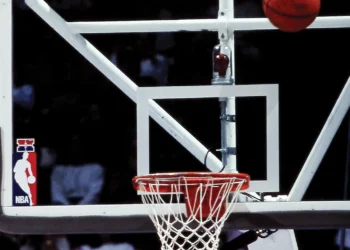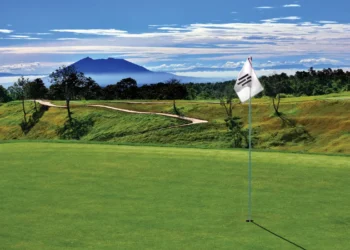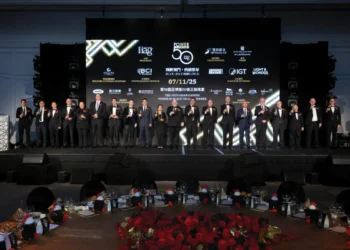Some Macau concessionaires have begun reducing the number of side bets they are offering on their baccarat tables for fear that over-implementation is diminishing their returns.
Graeme Croft, President – Asia-Pacific for smart table game supplier Walker Digital Table Systems, revealed during a panel session at G2E on Wednesday that operators are quickly learning what does and doesn’t work in terms of table layouts – almost a year after most completed the rollout of smart table technology across their gaming floors.
“The thing that is interesting is that so many side bets have now been approved by [Macau’s gaming regulator] the DICJ that, after early adoption, they are discovering there is a sweet spot as to how many side bets you need,” said Croft, who oversaw the first rollout of WDTS’s technology in Macau during his previous role as VP Table Games for MGM China.
“Some of the operators are now actually looking at reducing the number of side bets because it is diminishing returns. It’s a case of productivity over how many [side bets] do you want? Baccarat is not a craps table, it’s a baccarat table, so it’s about hitting that sweet spot.
“That’s one thing we’re seeing change in Macau and I think there will be more change over the next year in that direction.”
Smart tables and baccarat side bets have been a hot topic across Asia in 2025, with Las Vegas Sands Chairman and CEO Rob Goldstein revealing in the company’s 1Q25 earnings call that its Singapore resort, Marina Bay Sands, had increased the expected hold-adjusted win percentage on rolling play from 3.30% to 3.70% as a direct result of greater side bet utilization.
In Macau, approved side bets include Lucky 6, Small 6/Big 6 (also known as Small Tiger/Big Tiger), Lucky 7 and Super Lucky 7, among others.
Bryan Jenkins, Managing Director at Angel Australasia Pty Ltd, revealed earlier this year that baccarat side bets now account for almost 50% of Macau’s baccarat gaming revenues.
Croft said Wednesday there was no doubt operators had seen a “very big increase in that side bet action,” having adopted more side bets and reconfigured their layouts as a result of the added security smart tables provide.
“Basically, I think 40% of the handle is now derived from side bets,” he explained. “According to the percentages, it has moved the needle in regard to your total revenue.
“But as I said, some operators are now smart operators. The system is like a Ferrari. Everyone’s got a Ferrari now but not everyone can drive it like a great driver. So, it comes down to the ones that can actually use that data properly and what we’re seeing is talk about reducing some of the side bets because [too many side bets] is leading to diminishing returns.”
Jenkins, who also appeared on Wednesday’s panel session, added, “It’s a trade-off between what’s operationally efficient and how much you’re making out of these side bets. But at least you’ve got the ability now to be able to assess and make a decision that’s best for your property.”
American apprehension
Asia may be racing ahead when it comes to smart table adoption, but operators across the United States have been cautious in following suit.
There is good reason for this of course, not least of which is the far greater mix of games in the US market when compared with the baccarat-dominated floors of Macau – making full rollout significantly more challenging.
London Swinney, Vice President of Casino Operations at the MGM-operated Bellagio on the Las Vegas Strip, told IAG that smart tables remained very much on the company’s radar given its experience in Macau but explained that taking the plunge would require a significant commitment.
“Quite frankly, when Graeme was so successful with this program in Macau, I was a little bit jealous. I love the technology,” she said.
“But adoption for me, when you have these large, existing casinos, it’s quite an undertaking. It means re-chipping the entire floor, retrofitting all of your games, ensuring all of your systems can integrate well with it.
“Our team is continuing to look at it and evaluate the value but it’s a matter of truly quantifying that ROI because it’s quite complicated.”
Croft noted that the rapid rollout in Macau in 2024 was in response to a government mandate, adding that regulators across Asia appear to have been quicker to embrace smart table technology than many of their global peers.
“The regulators in Asia like the technology, obviously, because it protects their revenue,” he said.
“There has been some slow adoption in North America and the regulators are probably still feeling their way. There is also a big slot market here as well so capital spend is probably more on the slot side – changing machines regularly.
“To go into this [smart table] market is a big change, a management change. You’re going out on a limb and I guess the ROI is probably not like it is in Asia because the [table game] volumes in Asia are so big.
“But I still think there is some upside [for American operators] because I have watched some games open here on the strip, I was timing it and I cou;dn’t help but think, ‘Wow, that took so long’.
“It will be interesting to see because I think, like Macau, once the first adopter comes on board and they start to see some revenue upside through efficiencies and the regulators get comfortable, you might then see a snowball effect.”



































